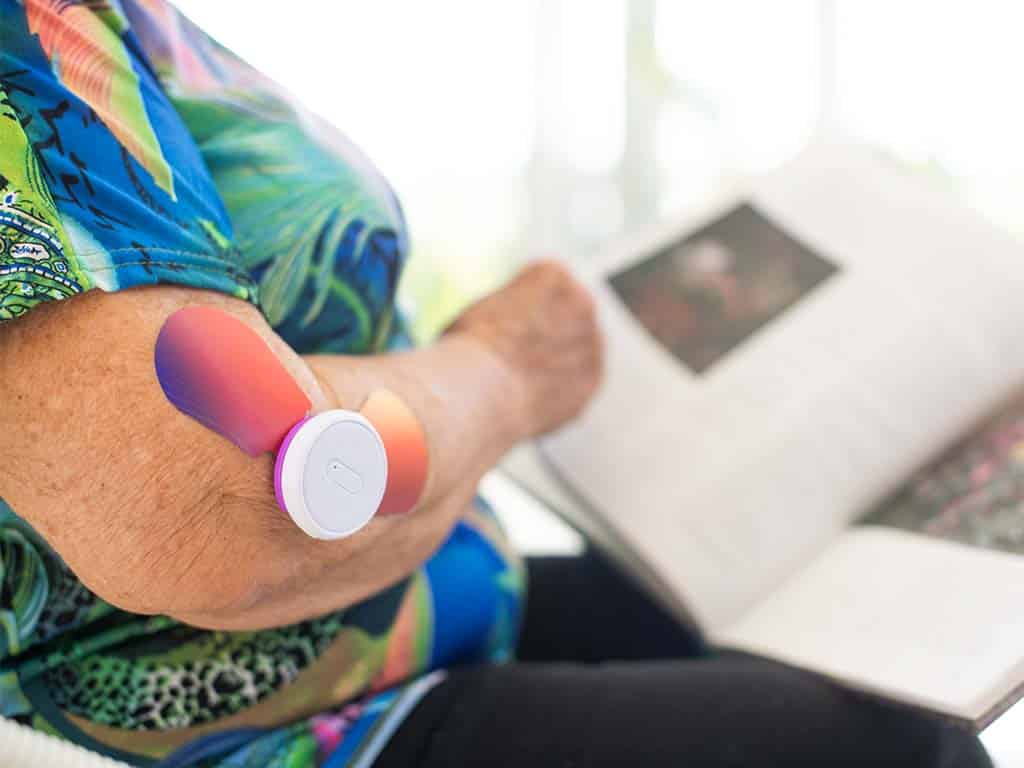
Transcutaneous Electrical Nerve Stimulation (TENS) is a form of electrotherapy that relieves chronic and acute pain conditions. Electrode pads are applied to the skin near or on the pain area. These deliver electrical pulses controlled by the user. However, it may also cause muscle spasms, which people may find uncomfortable. To avoid TENS unit causing muscle spasms, individuals must start on low-level settings and gradually increase them. Additionally, they must refrain from overusing the machine to prevent muscle spasms.
TENS machines use high and low-level frequencies to relieve many types of pain. High-frequency stimulation induces spinal nerve cells to block pain sensations. Meanwhile, low-frequency stimulation triggers the production of endorphins. These effects make TENS an alternative pain management method to pain medications. In addition, many people benefit from using TENS during rehabilitation. This article will present how to avoid TENS machines causing muscle spasms, what to do if it does and if muscle spasms caused by TENS are serious.
How to Avoid TENS Unit Causing Muscle Spasms?
TENS machines deliver electrical impulses through electrodes placed on the skin. They relieve pain using high and low frequencies, which trigger the body to relieve acute and chronic pain. However, in some cases, they may cause muscle spasms. For some, this is an unpleasant sensation and counterproductive effect. During a therapy session, start with low settings and gradually increase them to avoid TENS unit causing muscle spasms.
High-frequency stimulation triggers spinal nerve cells to block pain signals from reaching the brain. Meanwhile, low-frequency stimulation triggers the release of endorphins. Through these adjustable settings, people achieve optimal pain relief. It is best to consult a healthcare professional for advice on using the device. This may include the session duration, frequency, and settings. Moreover, they may ask for guidance on how to avoid muscle spasms.
Furthermore, they may check the guidelines provided by the device manufacturer on how to use the electronic device. It is crucial to place the electrodes in the correct areas. If the person uses more than one electrode, they must be at least one inch apart to prevent interference.
Proper Pad Placement
Proper electrode placement is crucial for effective pain relief. It is advisable to clean the skin with soap and water and dry it before attaching the pads. Generally, people place the pads near or on the pain area. Here are some recommendations for different types of pain:
- Lower back pain: place the electrode patches on the lower back, with one electrode on each side of the spine.
- Shoulder pain: place one pad in front of the shoulder and another behind it.
- Neck pain: place the electrode patch about two inches below the skull and on the muscly part of the neck.

What to Do When the TENS Unit is Causing Muscle Spasms?
It is vital to take immediate action if the TENS unit is causing muscle spasms. This will prevent further discomfort or possible injury. Typically, TENS stimulation should not cause involuntary muscle contractions. When they notice muscle spasms, they can check if the placement of electrodes is correct. Additionally, they may lower the intensity or frequency settings of the device. This should help alleviate the muscle spasms.
Furthermore, they can turn the device off and remove the electrodes. This will allow the muscles to take a break from electrical stimulation, which helps them relax and recover. During this break, they may observe if there is any skin irritation or inflammation. They may also use heat or cold therapy on the affected area to address any pain or inflammation.
People may consult a healthcare provider if the spasms do not resolve. They may assess the situation and condition of the individual and provide guidance. In addition, they may consult the manufacturer of the TENS device if the cause is a malfunctioning of the machine.
When to Seek Medical Help
It is essential to remain awake and alert during a TENS therapy session. This will allow the user to take immediate action if something goes awry. It will also prevent any adverse effects from worsening. Individuals should consult a healthcare professional if they experience worsening pain during or after the session. This might be a sign there is an underlying cause that reacts negatively to electrical stimulation.
Furthermore, those with metal and electrical implants should seek urgent care if their device malfunctions because of the electrical currents. Implants such as cardiac pacemakers are crucial devices for maintaining a health condition.

Is TENS Unit Causing Muscle Spasms Serious?
For most people, a TENS unit causing muscle spasms is not serious. However, it is still essential to monitor and manage them effectively. There are multiple potential reasons for a TENS machine to cause spasms. This includes electrode patch placement, intensity settings and prolonged use of the machine.
Overuse of TENS machines also has other possible side effects. It may cause skin irritation or mild burns to form under the patches. Furthermore, the excessive use of high-frequency pulses may result in muscle and nerve damage. If a person experiences these and excessive muscle twitching, it is best to seek advice from a medical practitioner.
Additionally, it is ideal to remember the safety guidelines for using TENS to avoid adverse effects from misusing the machine. People should not use TENS machines while submerged in water. Furthermore, they should avoid sensitive areas like the spine, chest, throat, eyes, and top of the head. This will allow users to experience optimal pain relief using TENS.
Potential Reasons for Spasms
There are several possible reasons for a TENS machine to cause muscle spasms. First, the immediate use of high-frequency settings may cause spasms. It may also cause shock and discomfort. Second, improper electrode pad placement may result in interference and device malfunctioning.
Third, overuse of the TENS machine, especially on high frequencies, is the likeliest cause of muscle spasms. It is crucial to remember the effects of electrical currents may vary from person to person. This is because their tolerance may also vary. Thus, users must follow the guidelines and consult their healthcare providers to ensure safety during TENS therapy.
Conclusion
TENS therapy is a drug-free method of pain relief. Many people use it to reduce or replace their intake of oral pain medications. When used properly, TENS machines are safe for many people. However, there are cases of TENS unit causing muscle spasms. Often, misuse of high-frequency stimulation is the cause. It is crucial to consult a healthcare provider and read the guidelines from the manufacturer to ensure safety.
If the person is experiencing muscle spasms because of TENS, they may lower the settings. Furthermore, they may turn the machine off and remove the electrodes to give their body a break. This time will allow the muscles to relax and stop twitching. However, if the twitching continues, they may need medical care. It is vital to use a reliable and FDA-cleared device for TENS therapy. One option is the iTENS from iTENS Australia.







